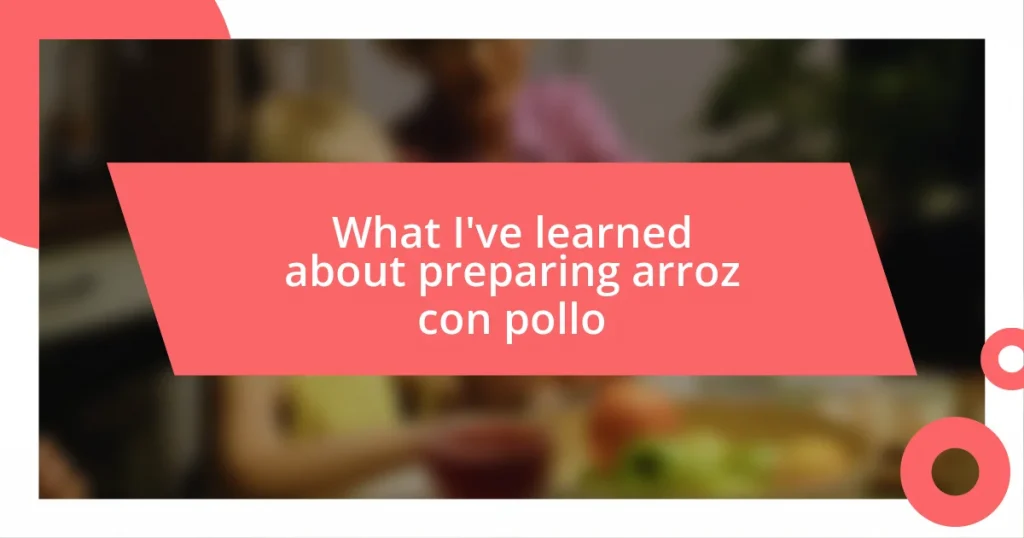Key takeaways:
- Rocoto chile is a unique, vibrant pepper with a distinct flavor profile—five times hotter than jalapeños, combining fruitiness with intense heat.
- Preparation involves safety measures like wearing gloves, and removing seeds/membranes for a milder taste; its thick flesh holds up well in various cooking methods.
- Health benefits include being rich in vitamins A and C, potential pain relief and metabolism boost from capsaicin, and support for heart health through improved cholesterol and circulation.
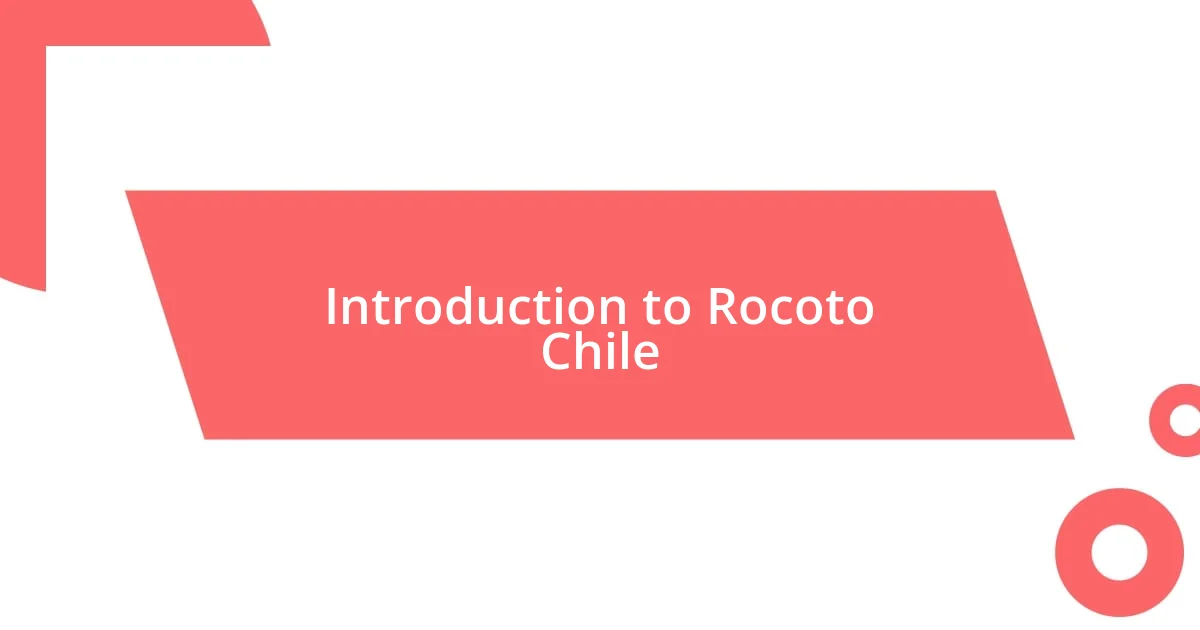
Introduction to Rocoto Chile
Rocoto chile, a vibrant pepper native to the Andean region, instantly piqued my curiosity the first time I encountered it. With its bright red or yellow skin and distinct apple-like shape, it’s not just a feast for the eyes; it’s a powerhouse of flavor and heat, packing a spicy punch that can send your taste buds on a delightful adventure. Have you ever tasted something that instantly made your forehead feel warm? That’s the magic of rocoto.
What sets rocoto apart from other chiles, like jalapeños or serranos, is its unique flavor profile. While it certainly brings the heat—about five times hotter than a jalapeño—it also has a fruity, almost sweet undertone that I find incredibly appealing. My first experience was in a Peruvian restaurant, where they served a rocoto relleno, or stuffed rocoto. The combination of spiciness with the creamy stuffing was unforgettable. It made me wonder how I could recreate that magic in my own kitchen.
When you think of using chiles in cooking, what comes to mind? For me, it was about exploring the versatility of this fabulous pepper. Whether I’m adding diced rocoto to salsas or blending it into sauces, I love how it elevates my dishes. The aromatic fragrance that wafts through my kitchen when I toss them into a pan is simply exhilarating. Incorporating rocoto chile into my meals has transformed the way I think about heat and flavor in cooking.
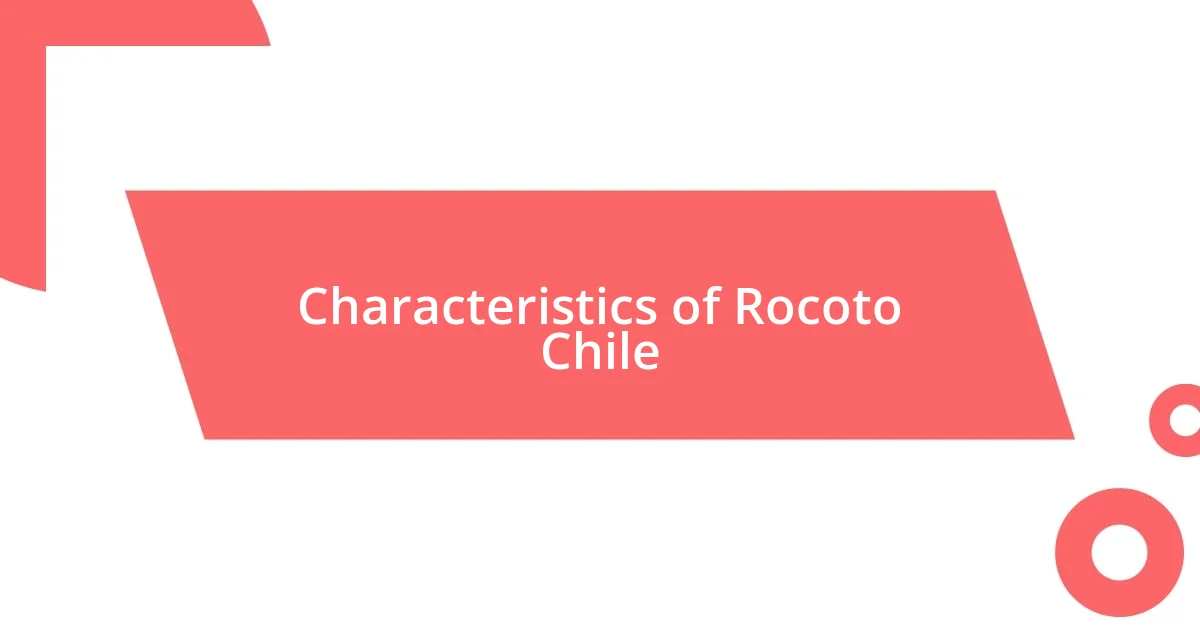
Characteristics of Rocoto Chile
Rocoto chile is unlike any other pepper you might have tried. Its skin can be deep red, bright yellow, or even orange, resembling a mini apple. This visual appeal, combined with its round shape, makes rocoto not only a flavorful addition but also a striking component in any dish. I remember laughing with friends when I first spotted them at a local market; I thought I was looking at a fruit display until I got closer!
What really intrigues me about rocoto is its astonishingly high Scoville rating, often ranging from 50,000 to 250,000 units. To put that in perspective, that heat level places it well above jalapeños, which typically sit around 2,500 to 8,000. The first time I dove into a rocoto salsa, there was a moment of panic as the initial sweetness transformed into a fiery blast of flavor! That delightful juxtaposition of heat and sweetness is something I now appreciate deeply, and it makes every dish truly sing.
Another characteristic that I love about rocoto is its thick flesh, which holds its shape well during cooking. This means it can be roasted, stuffed, or even grilled without losing its integrity. I often grill them, feeling a rush of nostalgia as I recall barbecues with family where we’d toss in various vegetables, rocoto included, creating a smoky, spicy side that stole the show.
| Characteristic | Description |
|---|---|
| Color | Deep red or bright yellow; resembles a mini apple |
| Heat Level | 50,000 to 250,000 Scoville units; much hotter than jalapeños |
| Flavor Profile | Fruity with sweet undertones, followed by intense heat |
| Flesh Thickness | Thick flesh that holds up well during cooking |
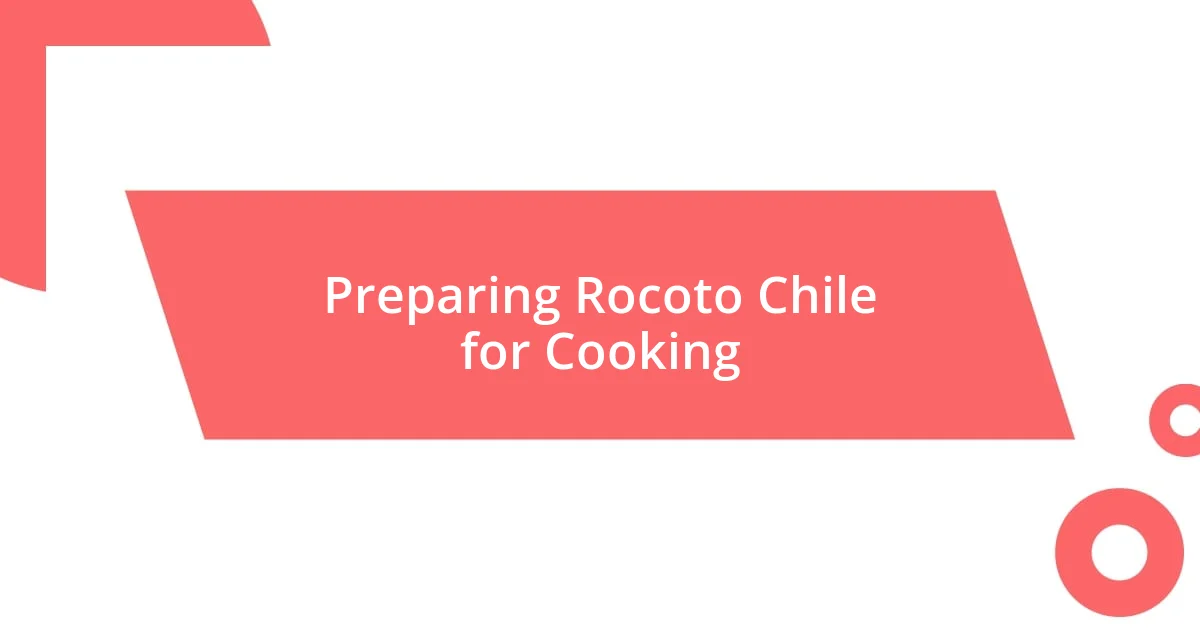
Preparing Rocoto Chile for Cooking
When I prepare rocoto chile for cooking, the first step is always about safety—these peppers can pack quite the punch! I remember the first time I sliced one open, not anticipating the heat that would soon linger on my fingers. Now, I always make sure to wear gloves; it saves me from any unintended spicy encounters later on. After that precaution, I use a sharp knife to cut around the stem, removing the top to access the vibrant interior. Inside, the seeds and ribs can be quite fiery, so I often scoop them out to dial down the heat, especially if I want to share the dish with friends who prefer a milder flavor.
Here are some useful steps I follow to get my rocoto ready:
- Wear gloves to avoid skin irritation from the chile’s oils.
- Slice off the top of the rocoto to expose its flesh.
- Remove seeds and membranes if you want a milder taste.
- Chop or dice the flesh to your desired size, whether for salsas, sauces, or stuffing.
Each time I prepare rocoto, it feels like a mini-adventure—every cut unleashes that tantalizing aroma, reminding me of the first time I tasted rocoto relleno at that little eatery. It’s a small but significant reminder of how cooking can evoke memories, transforming simple ingredients into a flavorful experience.
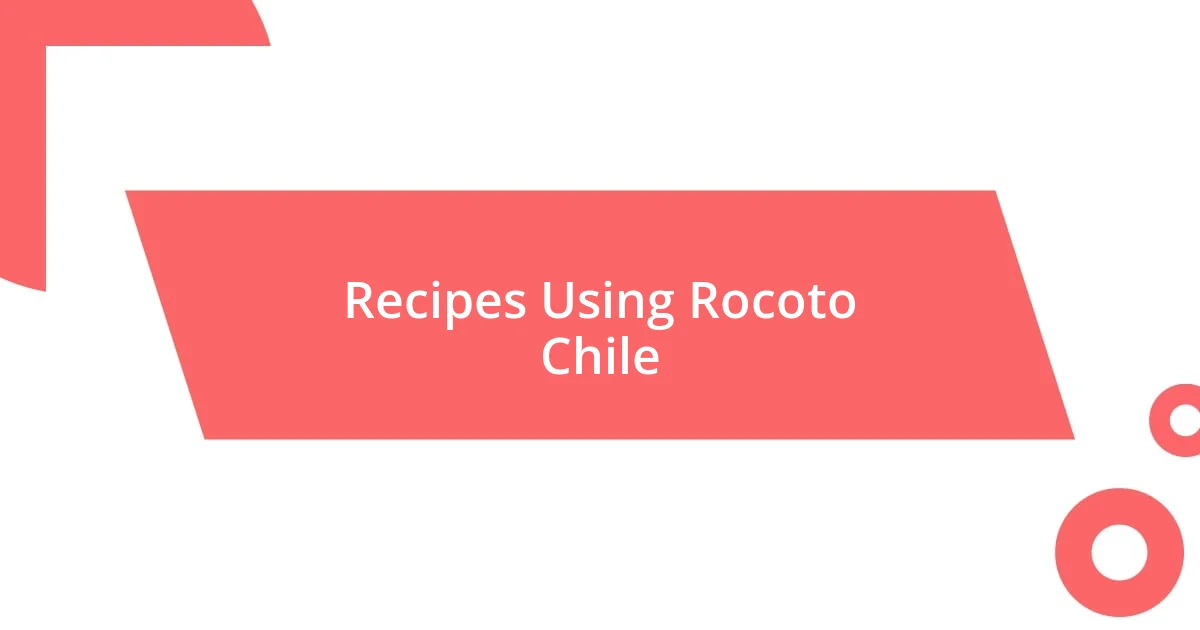
Recipes Using Rocoto Chile
One of my favorite ways to showcase rocoto chile is in a vibrant rocoto salsa. The first time I served this at a gathering, I could see guests’ eyes widen with curiosity. I blend together chopped rocoto, red onion, garlic, and fresh cilantro, then squeeze in some lime juice. The result is a colorful, zesty companion for grilled meats or chips that never fails to spark lively conversations.
Another standout dish I love making is rocoto relleno, where I stuff the peppers with a savory mix of ground meat, spices, and cheese. I can still recall how the aroma filled my kitchen, transporting me back to a Peruvian restaurant that introduced me to this delight. Baking them creates a beautiful char and a melty topping that will have anyone at your table eagerly reaching for seconds. Isn’t it wonderful how certain dishes can create unforgettable moments?
Grilling rocoto, on the other hand, offers a different experience. I slice them in half, brush them lightly with olive oil, and place them on the grill until they’re perfectly charred. Once, I paired them with corn on the cob, and the combination of smoky sweetness was pure bliss. The natural sweetness of the corn complements the intense heat of the rocoto, making it a dish that even the spice-wary can enjoy. Can you sense the excitement in sharing these flavors with friends? Each bite carries not just taste, but stories and laughter.

Health Benefits of Rocoto Chile
Rocoto chile is not just a flavor powerhouse; it also brings a wealth of health benefits to the table. For instance, these peppers are rich in vitamins A and C, which are crucial for maintaining healthy skin and boosting immunity. I can still remember the time I was recovering from a cold—a spicy rocoto salsa became my go-to remedy. The burst of heat made me feel alive, and the added nutrients were just what my body needed to rebound quickly.
I’ve discovered that the capsaicin in rocoto can also offer some surprising advantages. This compound, responsible for the signature heat of chiles, has been linked to pain relief and improved metabolism. Last summer, I experimented with adding rocoto to my morning smoothie. The fiery kick not only made it more exciting but also left me feeling energized and ready to tackle the day. It’s incredible to think how something so small can have such a profound impact on our health and energy levels.
Lastly, I find it fascinating how including rocoto chile in my meals can promote heart health. Studies suggest that consuming chiles can help lower cholesterol levels and improve blood circulation. After reading about this, I challenged myself to create heart-healthy dishes featuring rocoto. One memorable dinner was a grilled chicken topped with a rocoto-infused sauce. It was delicious, and knowing that I was nourishing my body while enjoying my meal felt like a triumph. Have you ever experienced that satisfying moment when you realize that what tastes good is also good for you? It’s a win-win situation!













